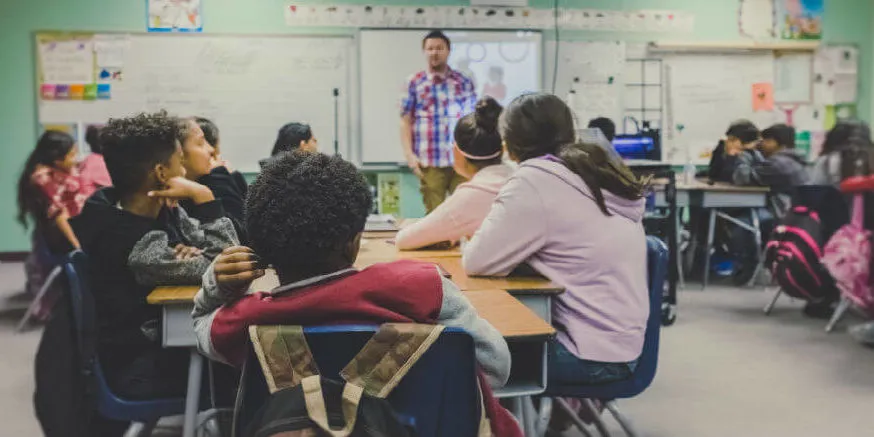The education industry has already started using augmented reality (AR) in the classroom. Mobile apps that use AR are helping create a more three-dimensional experience for students and lecturers. Augmented reality is a technology used in mobile apps to reveal digitally-overlaid content on top of the real world.
Students of all ages can benefit from augmented reality. It lets educators create new multimedia classroom experiences and learning games. Plus, the technology can be used to create textbooks with digital content that can only be accessed with a mobile device.
AR has the capacity to give students another learning tool, with an emphasis on visuals. As we learn more about how different people absorb classroom material differently, educators can develop a more interactive classroom environment that may ultimately increase the success rate of students across various disciplines.
Educational Games
The AR world is expected to be worth about $659.98 million by the end of 2018, according to the New Jersey Institute of Technology. This indicates just how massive the space has become, with academic environments taking an active role to optimize how students learn. Most kids love to play games, which is why AR-based games that can be accessed from mobile devices are ideal for many for them.
One such AR game is a digital puzzle box. Educators use them to create games involving mathematical problems, grammatical questions or scientific quandaries. Lecturers can configure a number of challenges on a computer that students interact with through a mobile device. These puzzle boxes can help a student’s critical thinking skills with timers and gameplay lasting from minutes to hours and even semesters.
These AR experiences can be incorporated into mobile apps which students may work on alone or in a group, teaching collaboration skills, the delegation of responsibilities, and social skills. Games offer a great way to learn because they are fun, and technology adds a level of sophistication to the learning experience that helps students become better prepared for the requirements of the modern professional world.
AR in Classrooms, Textbooks and Notecards
Another type of game you can create with AR is a scavenger hunt. You can program applications to create augmented reality experiences associated with specific physical locations. This can be done by creating a visual indicator called a QR code that you can print out and attach to any element in the real world.
You can then scan this code with a mobile device for a real, visceral experience with your surroundings. Some teachers attach QR codes to objects in the room or even school. These experiences can teach students to complete an assignment in the classroom or even calisthenics in the gym.
Students can take videos of themselves performing tasks to prove completion. The same technology can be used in textbooks, with textbook writers adding digital content with QR codes. It makes for a more interactive learning experience with 3D models and supplementary text.
Augmented reality educational flashcards are here as well. There’s an app called Dinosaur 4D+ from Octagon Studio with AR flashcards that offer students a more comprehensive idea of what dinosaurs may have looked like. The flashcards also offer information about their habitats, physical bodies and origins.
Much like how the best way to learn a language is going to a country where that’s the native tongue, the best way to learn is by immersing yourself in the concepts, ideas and images lecturers are teaching students. AR can easily be added into mobile apps in order to help make that happen—while improving student engagement rates.
AR Worksheets and Word Walls
AR mobile apps can also be developed in a way that helps students with their homework and assignments when they can’t get in touch with their educators. This can be done with AR-enabled worksheets, letting students learn more about a subject when they’re on their own.
A number of academic institutions are already testing printable AR worksheets, which are perfect for kids and teens who are always on their phones. Augmented reality can make images and information come out of the textbook when students aim at the textbook with their phones. This way, the emphasis is placed on the most important concepts that a student has yet to fully grasp by breaking them down into images and words.
These elements are then incorporated into a worksheet that carries the most vital information needed for a test or the tools needed to write a successful essay. Word walls serve a similar purpose. Students can record themselves offering the definition of words digitally, which other students can access through an app such as Aurasma, which tells them the word’s definition and how to use it in a sentence.
These worksheets serve as another example of how combining something kids like with important educational material is the way to increase learning in the classroom. Word walls show how students can help each other—without looking up from their devices.
Perfecting the Lab Experience With AR
Aspiring scientists and children learning the sciences have a lot to gain from AR in a lab environment. Lab experiments and demonstrations have been used for millennia to help students understand challenging concepts by practicing them in a real-world environment. Limited budgets and safety hazards can make the prospect of AR in the lab very exciting.
There may be little to no limit to how far an educator can go in terms of experiments they can try in the classroom with AR. One mobile app that helps students use AR in the classroom is Anatomy 4D, which allows students to see a 3D model of the human body on printed targets with digitally-overlaid data.
Another app is Experience Chemistry, which allows you to see virtual chemical reactions as students learn about different chemical elements. AR also helps students learn more about the safety procedures they need to follow in the lab and possible hazards with digital illustrations of them. Seeing something versus hearing about it usually leaves a stronger impression on people.
There are many benefits of augmented reality in education. By using augmented reality in the classroom, schools can offer much more content and a more interactive and comprehensive learning experience for students. All students will need are devices, which schools can provide or they can buy individually. AR immerses them in the concepts they are learning.
If you’re seeking to develop a mobile app that uses AR, you will need a developer with the experience and technical expertise to help you do so. The team at 7T specializes in academic AR app development. We’re also well-versed in other emerging technologies, including virtual reality, artificial intelligence, blockchain and natural language processing.
7T is headquartered in Dallas. We also serve clients in Austin, Houston, and beyond. If you’re ready to discuss your project, we invite you to contact us today.










